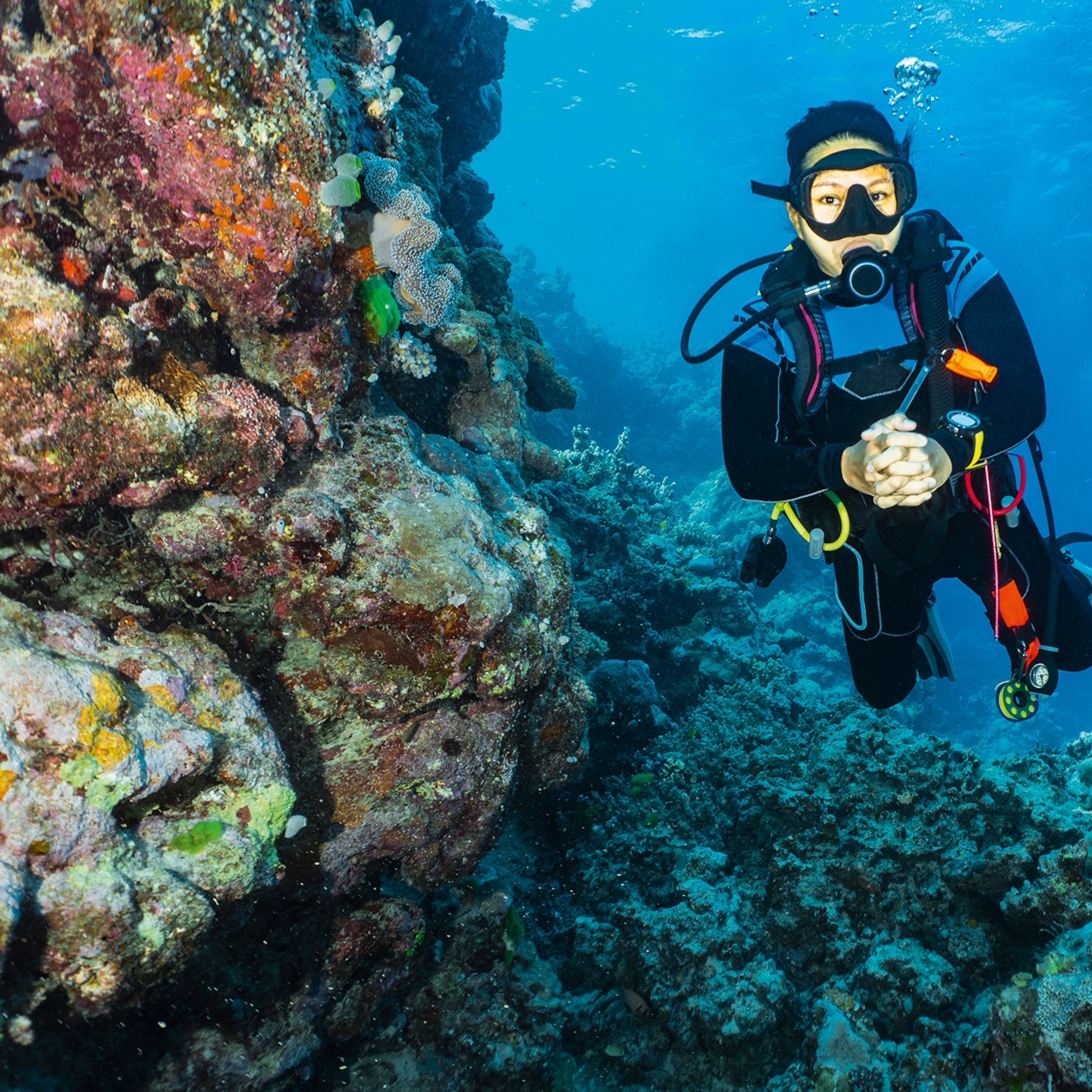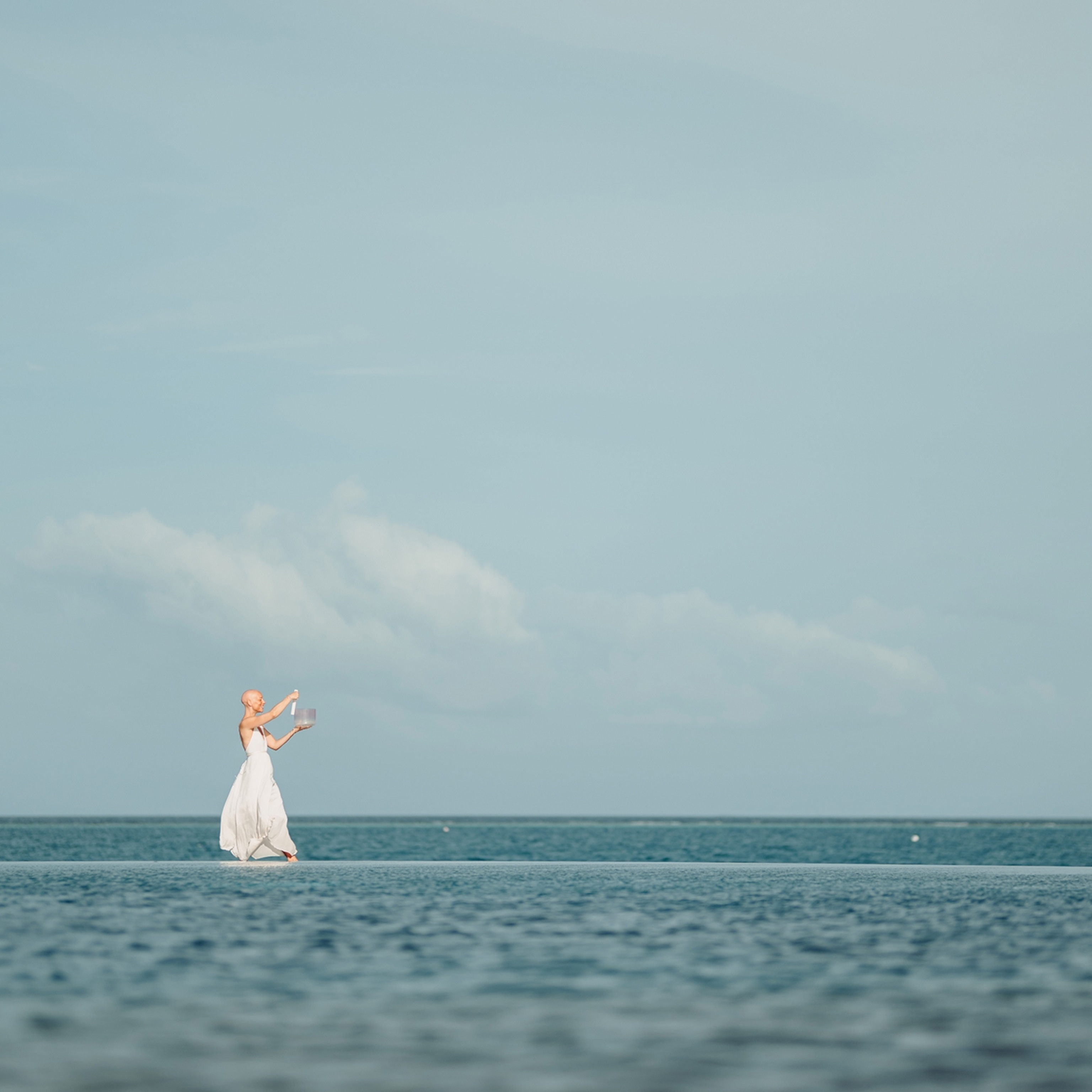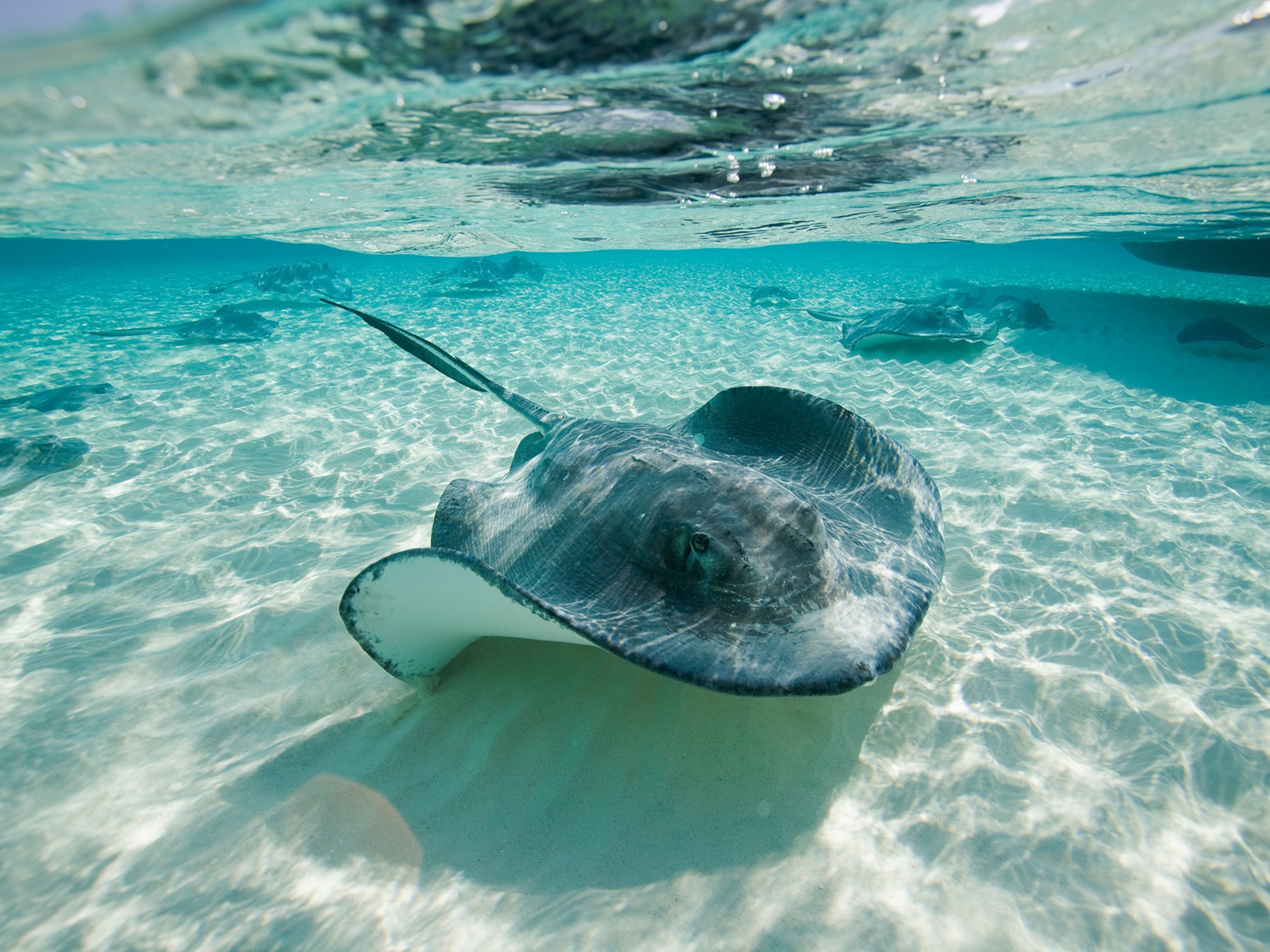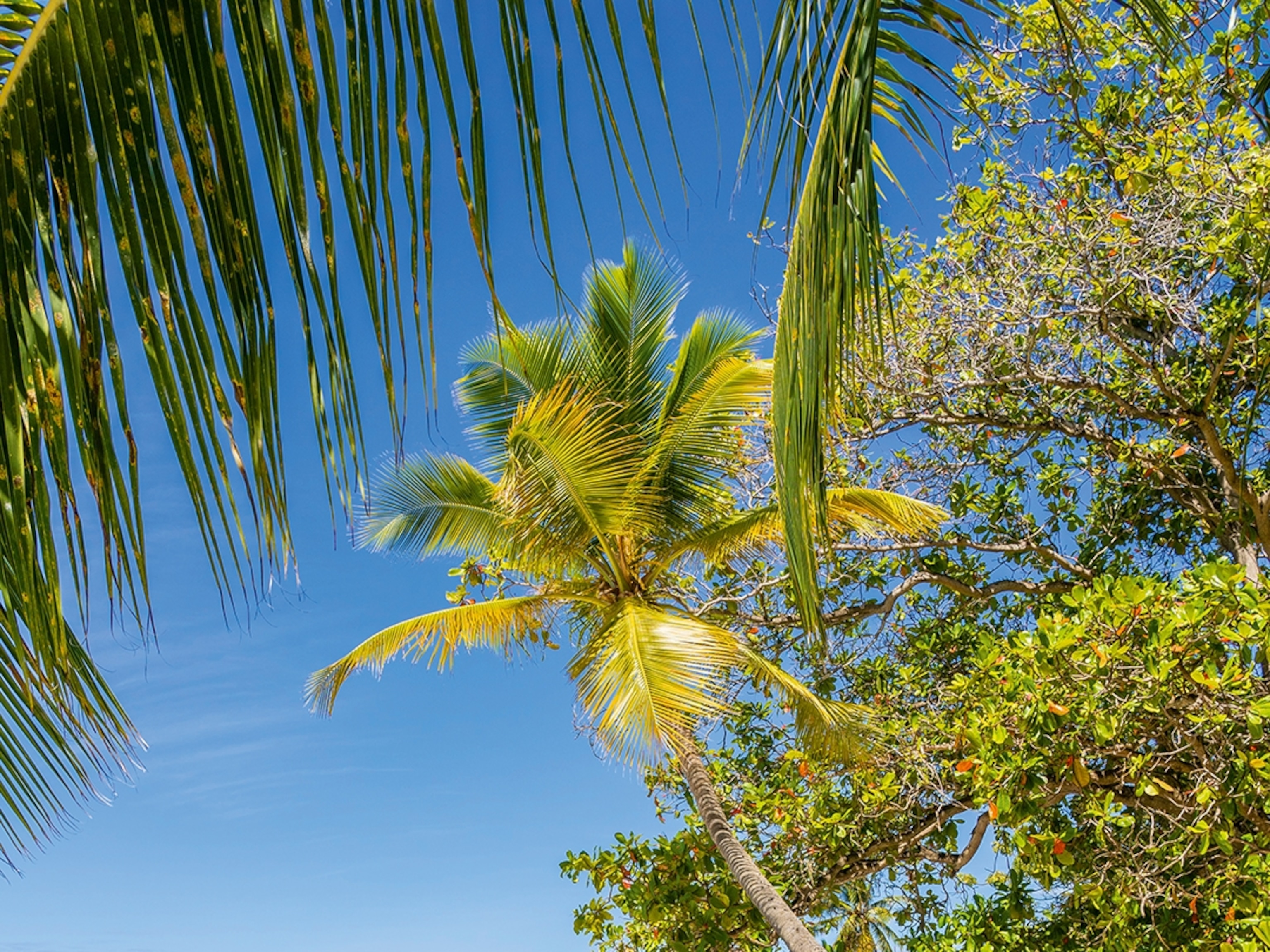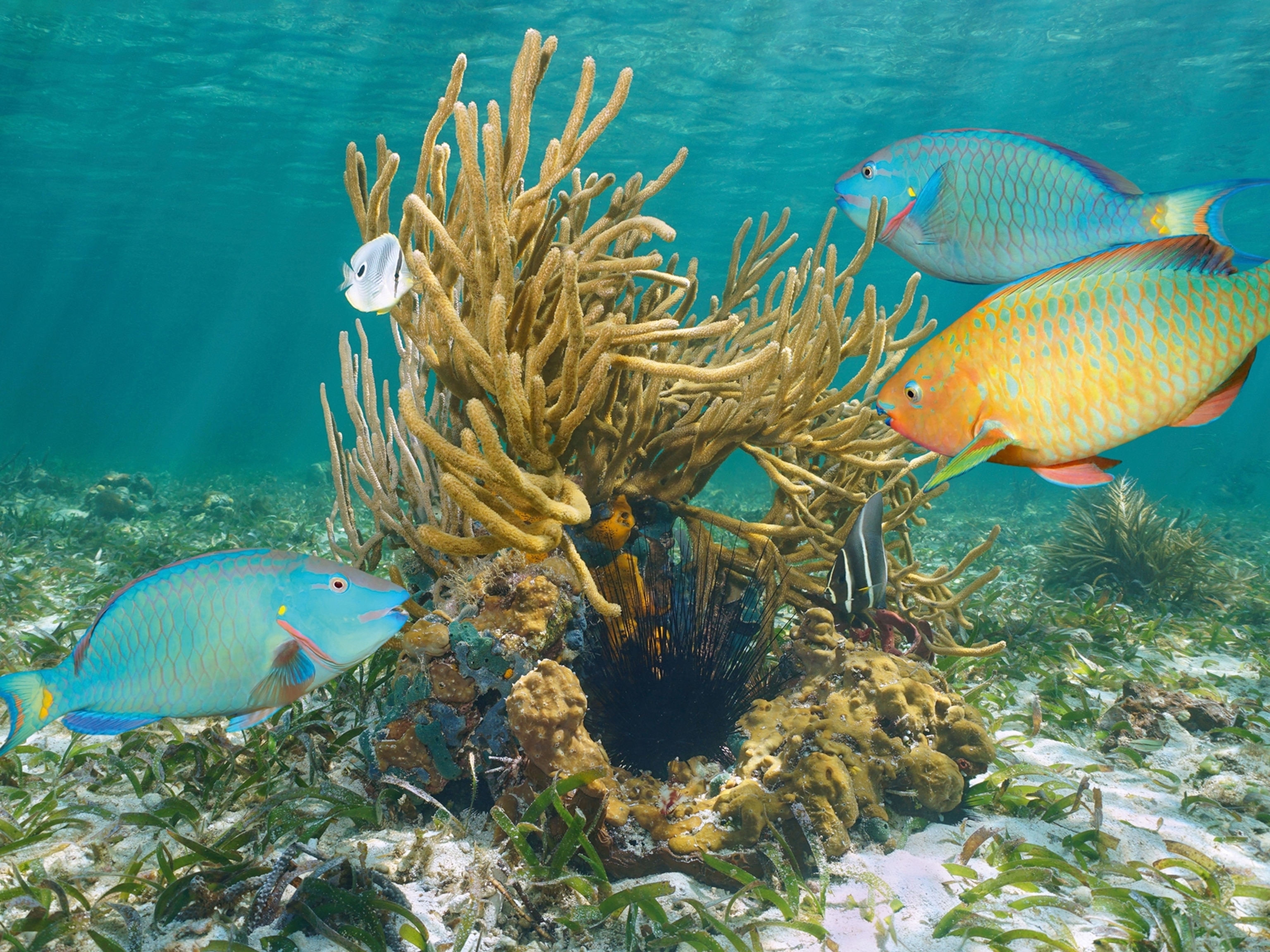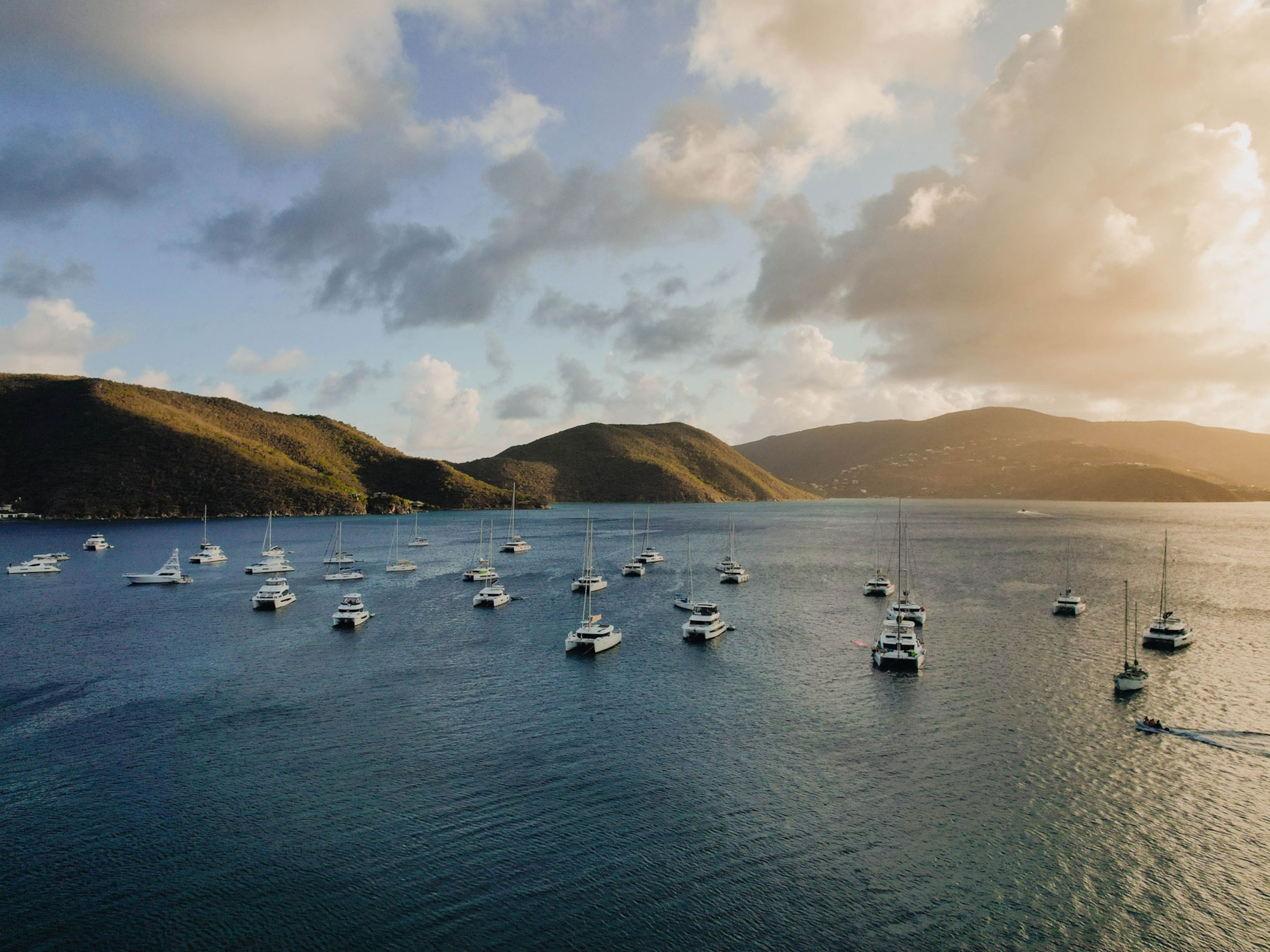
Where to go diving in the Caribbean, from Belize to the Bahamas
The Caribbean is a haven for divers of all experience levels, offering diverse marine life, mysterious submerged wrecks, teeming coral reefs, year-round warm temperatures and excellent visibility.
There are few better places in the world for diving than the Caribbean. The clear waters teem with kaleidoscopic corals, vast shoals of tropical fish and iconic marine creatures, from whales and rays to turtles and sharks.
Add the glistening white beaches and alluring tropical vibes found across over 7,000 islands, and you’ve got the ultimate escape. Divers have the region’s unique geology to thank. The Caribbean Sea loops around a tectonic plate created by ancient volcanic eruptions, resulting in rich biodiversity and habitats woven through corals, currents and underwater canyons — from Belize’s Barrier Reef to the Cayman Trench. For all the life on the Caribbean’s islands, there’s a lot happening in the deep blue in between.
Whether you’re new to diving or looking for more challenging adventures, the Caribbean provides options for all ages and levels. Visitors can gain their PADI Open Water Diver qualification in two to four days in Cayman Islands’ balmy waters, while more experienced divers can opt for shark diving in the Bahamas, exploring Belize’s offshore lagoons or drift diving off the stunning coast of Honduras.
1. The Cayman Islands
Best for: beginners
The Cayman Islands are perfect for less-experienced divers due to a choice of hundreds of dive sites and the relative lack of strong currents. There will almost always be access to flat, calm stretches of water, and the reef is just 100 feet from the shore.
Where are some of the best spots for newcomers?
The west side of Grand Cayman is popular with families and travellers wanting to try scuba. Sunset Divers and Divetech scuba dive centres are located at either end of Seven Mile Beach, and are mere feet away from the reef. These short distances make wearing and managing unfamiliar and cumbersome dive equipment an easier prospect for beginners.
(How to choose the right Cayman Island for you)

How long does it usually take to learn to dive?
The PADI Open Water Diving qualification is a two-to-four-day course, depending on whether theory is completed online or at a dive centre. Becoming an open-water scuba diver enables you to dive most places, as long as you’re accompanied by a qualified diving buddy. Visitors often complete the course at the beginning of their stay, then experience the freedom of boat and shore diving across the islands afterwards.
Where should I head to once I am certified?
The islands are surrounded by the Cayman Trench, so qualified divers can experience breathtaking topography from this undersea mountain range, as the seabed drops off dramatically into the deep. Looking over the wall on the west or north side of Cayman will take your breath away. Alternatively, the shallow dive sites in Cayman offer an abundance of marine life; you’ll feel like you’re swimming around in a tropical aquarium.
The USS Kittiwake, one of the best-known wrecks in the Caribbean, rests 64ft below just off Grand Cayman’s Seven Mile Beach. Accessible for divers and snorkellers due to its relatively shallow depth, the 250ft vessel, which served in the US navy for nearly 50 years, houses an artificial reef and is a diver’s playground. Little Cayman is also a world-class scuba destination, flooded with dive sites in its Bloody Bay Marine Park. A shallow 20ft dive along the reef is an enchanting introduction to coral, fish and rays. Finally, there’s Stingray City off the north of Grand Cayman, one of the most impressive shallow dives in the world with hundreds of rays hovering around the sand bar.
Sunset Divers offers Discover Scuba sessions or Tri Dives for $75 (£140) per person, Open Water Courses from $400 (£315) and the USS Kittiwake wreck dive from $100 (£80).
Divetech’s dive and accommodation package starts from $1,445 (£1,140) per person for a week, which includes six days of boat diving and unlimited shore diving.
Kimpton Seafire Resort and Spa offers luxurious accommodation on Grand Cayman’s Seven Mile Beach. A one-bedroom family suite costs from $1,306 (£1,026) per night. Diving booked separately.
2. The Bahamas
Best for: shark diving
The sprawling islands of the Bahamas offer culture, food, history and sharks — lots of sharks. In high season, between December and April, divers flock here to see imposing tigers and hammerheads, hoping to also spot some lemon, nurse, blacktip, blacknose and Caribbean reef sharks. This big fish magnet presents an adrenaline-charged challenge for new and experienced divers alike.
What are the best shark dives in The Bahamas?
Tiger Beach, located two hours north of Grand Bahama island by boat, attracts daily gatherings of sharks, which are safe to swim among on expert-led tours. At just 40 feet you’ll find yourself amongst scores of Caribbean reef sharks, up to 8ft long, plus a small handful of tiger sharks, 6.5-10ft long. It’s an amazing sight, watching them interacting with each other in open water.The Bimini Hammerhead dive off Bimini Island is one of the most unique underwater experiences. Instantly recognisable by their distinctive mallet-shaped heads and bulging eye sockets, hammerhead sharks glide and swerve in a graceful dance.
What certification is needed for these spots?
To join any dive tour or trip you’ll need to have your PADI or SSI Open Water Diver qualification. To feel more confident in open water, at depth, or on multi-tank trips you might also want to complete the Advanced Open Water Diver course.
What other kinds of diving are on offer?
The SS Sapona, just off Bimini, is a great first wreck dive for newly certified divers due to its shallow depth. Since being struck by a hurricane in 1926, its striking silhouette stands up out of the water. Divers can weave through the haunting hull structure, which now resembles a hollowed-out rib cage, spotting trigger fish, grunts and lobsters.

Paradise Cove Beach Resort is a good base for Tiger Beach dives. Alternatively, fly to Florida and take a four-day liveaboard with Jim Abernethy’s Scuba Adventures from $3,140 (£2,470) per person.
If you’re keen on Bimini Hammerhead and SS Sapona dives, go for Neal Watson’s Bimini Scuba Dive Centre. Dive and hotel packages start from $304 (£240) per person for two nights.
Original Diving’s all-inclusive package includes return flights, transfers, three nights’ accommodation in Nassau, five nights’ B&B in Bimini, and six days of diving (including the Great Hammerhead Safari) from $5,720 (£4,500) per person.
Nassau is a great base for diving in the Bahamas, with direct flights available from the UK. Book with Stuart Cove’s Dive Bahamas for everything from PADI courses to diving among sharks.
3. Belize & Honduras
Best for: a challenge
While stronger currents provide exciting diving in the eastern Caribbean, the western pocket of the region — next to Belize and Honduras — is not to be missed. This is where you can find challenging drift diving, wall drop offs, whale shark spotting and seamount (underwater mountain) diving. Three atolls and the longest barrier reef in the Northern Hemisphere means lots of scuba tank refills, full log books and dive fever.
What’s drift diving?
Put simply, it’s diving with the current, a potentially daunting experience that’s best attempted with a PADI Advanced Open Water certification under your belt. The Morat Wall, in the Bay Islands of Honduras, carries divers along three spectacular miles of offshore reef through huge kaleidoscopic brain corals. Then there are the seamounts of Cayos Cochinos — 18 miles off the coast of the Honduran island of Roatán — which offer a dizzying deep reef dive with strong currents. These spectacular underwater mountain ranges have become an enchanting shelter and refuge for massive eagle rays, Creole wrasse and abundant pelagic life.
What’s the best way of diving the three Belizean atolls?
Belize is home to the great Mesoamerican Barrier Reef and some of the healthiest coral in the Caribbean. From the mainland, divers ride out to the deep blue lagoons of Lighthouse Reef Atoll, Glover’s Reef Atoll and Turneffe Atoll.
A multi-dive day at Lighthouse Reef Atoll starts at the famous Great Blue Hole. The 100ft-wide marine sinkhole plunges into oblivion and divers come face to face with some of the largest underwater stalactites on the planet. At Half Moon Caye, divers will find swim-throughs dotted with tiny silverfish, black corals, eagle rays, nurse sharks, turtles, vivid sponges and, occasionally, even dolphins. The Aquarium dive site at Long Caye is a popular final destination, where colours deepen at sunset as you peer over the edge of the underwater abyss.

At Glover’s Reef Atoll, dive trips start at the Pinnacles site where enormous coral heads rise 4o feet from the seabed, creating multicoloured, extraterrestrial-like statues. Long Caye Wall dive site then descends to a platform of bright white sand where stingrays and garden eels await.
The Turneffe Islands Atoll, closet to the Belize mainland, is known for its mangroves and shallow sea gardens, making it a gift for scuba divers. Another full day here takes in the Elbow, a spot where two currents meet, resulting in abundant marine life, unique coral formations and underwater walls. These three atolls offer packed days of energetic diving for experienced divers.
To explore the Belizean atolls, stay at the PADI 5 Star Hamanasi Adventure and Dive Resort from $329 (£260) per person, diving from $228 (£180) per person per day.
Original Diving offers an eight-night B&B accommodation and diving package in Belize, including all flights, transfers, excursions and diving from $7,035 (£5,540) per person.
For diving in Roatán, Honduras, fly directly via Belize or the US, or take the Roatán Ferry from La Ceiba. PADI 5 Star dive centre Roatán Divers offers 10 dives for $515 (£405) per person. Or, stay seven nights with West End Divers from $580 (£457) per person.
To subscribe to National Geographic Traveller (UK) magazine click here. (Available in select countries only).
